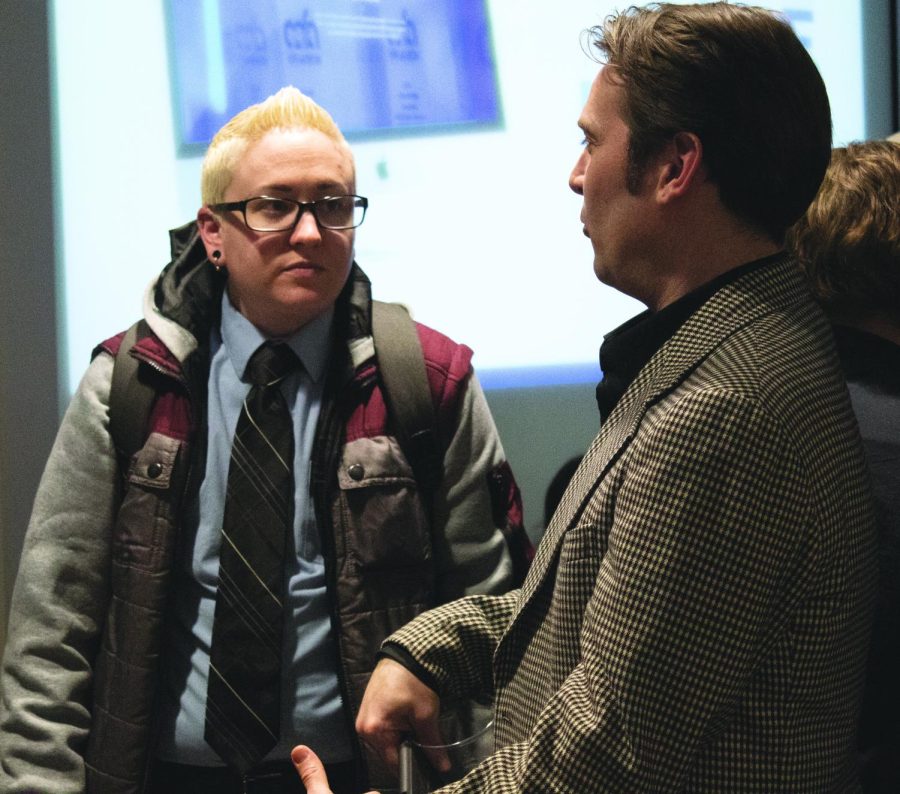Johns Hopkins professor discusses mood disorders at Christopher Darling art gallery
January 31, 2020
Artists and other creative people could be linked with mood disorders, a national mental health expert told visual communication design students, faculty and other attendees Thursday.
“There is a very much an elevated rate of bipolar levels and creative occupations in bipolar Swedish patients,” Dr. Kay Redfield Jamison, a professor of psychiatry from Johns Hopkins School of Medicine, said.
Her discussion, “Touched with Fire: Mood Disorders, the Arts and Creativity,” addressed the research she had conducted over the past several decades regarding mood disorders, specifically bipolar disorder and manic depression. This event was held in conjunction with the Christopher Darling art gallery; both events were sponsored by the School of Visual Communication Design.
About 151 studies on mood disorders and creativity exist, and the findings are “pretty consistent,” Jamison said.
One Swedish population-based study followed the performance of 16-year-old students to determine if psychiatric illness existed later in their lives.
“The researchers followed up with them almost 10 years later,” Jamison said. “Individuals with excellent school performance in language and music, which are creative outputs, had a particularly strong association with increased risk for bipolar disorder.”
Bipolar disorder affected many artistic people, including Vincent Van Gogh, Ernest Hemingway, Robert Lowell and even Chris Darling.
After struggling with bipolar disorder, Chris Darling died by suicide June 2018. Darling struggled with mental illness since he was young, said Craig Darling, Chris’ father.
After reading Jamison’s book, “An Unquiet Mind: A Metaphor of Moods and Madness,” Deborah Darling, Chris’ mother, was able to better understand and help her son. Inspired by her work, she recommended Jamison speak at Kent State.
“I know that, especially in the art department because of the creative element, there’s a lot of students that struggle with their mental health,” Deborah Darling said. “So we wanted to be open about it and do something that would really help the students.”
Darling got into contact with Dave Robins, the associate director of the School of Digital Sciences, who agreed that Jamison’s discussion might help students.
“I came in contact with a lot of students [when I was interim director of VCD] who were having their own issues with trying to cope with the pressures of school,” Robins said. “I don’t want for students who have these issues to feel like they’re alone, that it’s weird or anything like that. These are important issues for them to acknowledge and for everyone to deal with in time.”
Students have plenty of on-campus mental health resources at their disposal, but getting started might be a challenge.
“Students can begin to take care of their own mental illnesses with the right direction,” Jamison said. “Learn. Read. Ask people. Talking gets the conversation going. Don’t hide from it.”
Brady Warmbein is a reporter. Contact him at [email protected].












